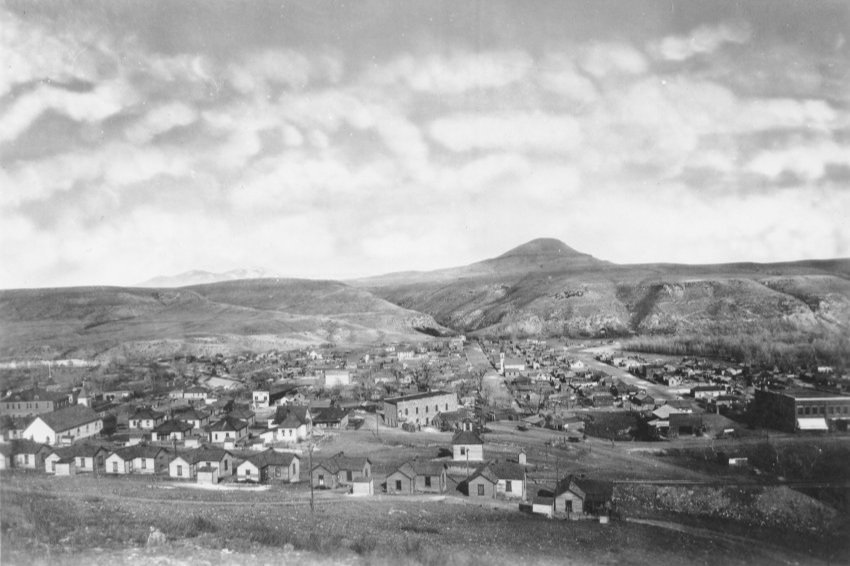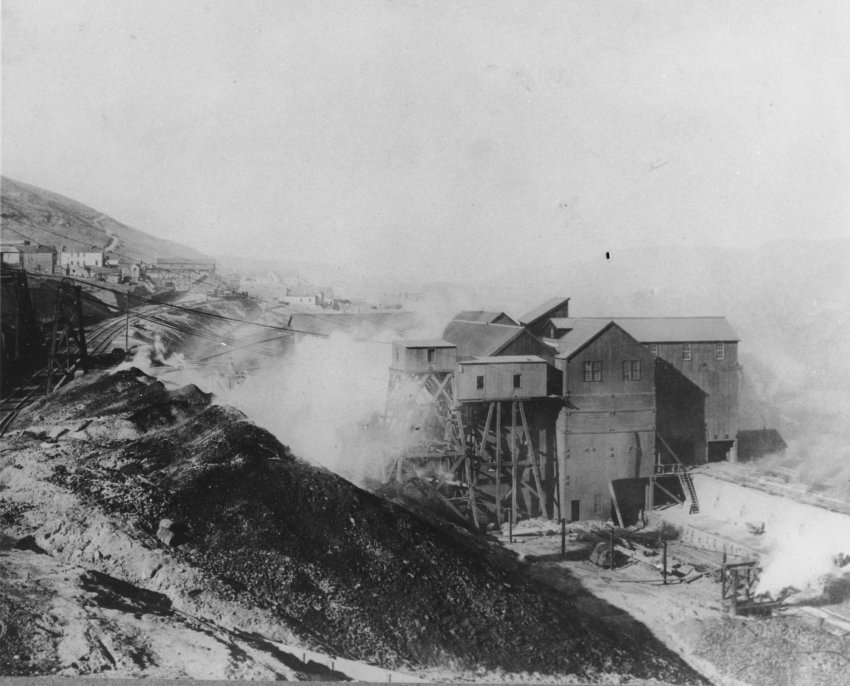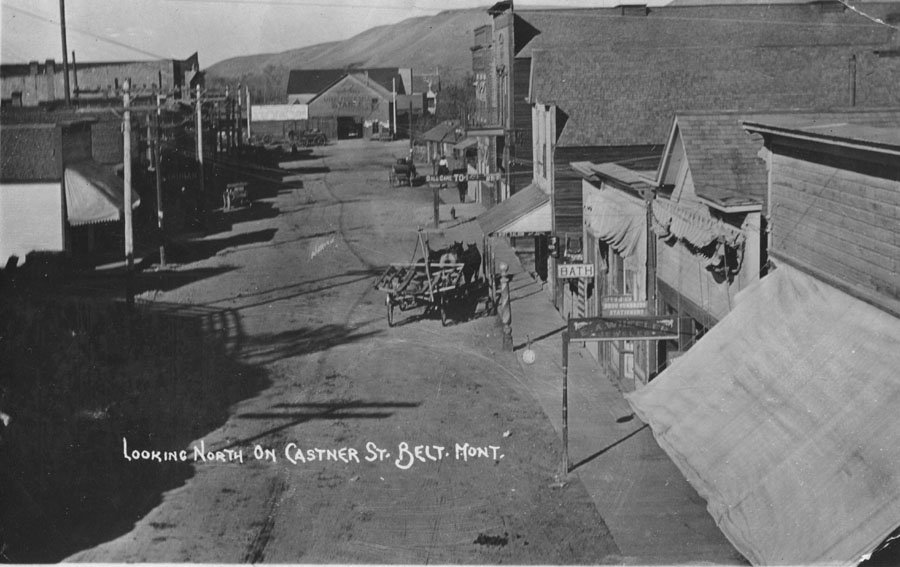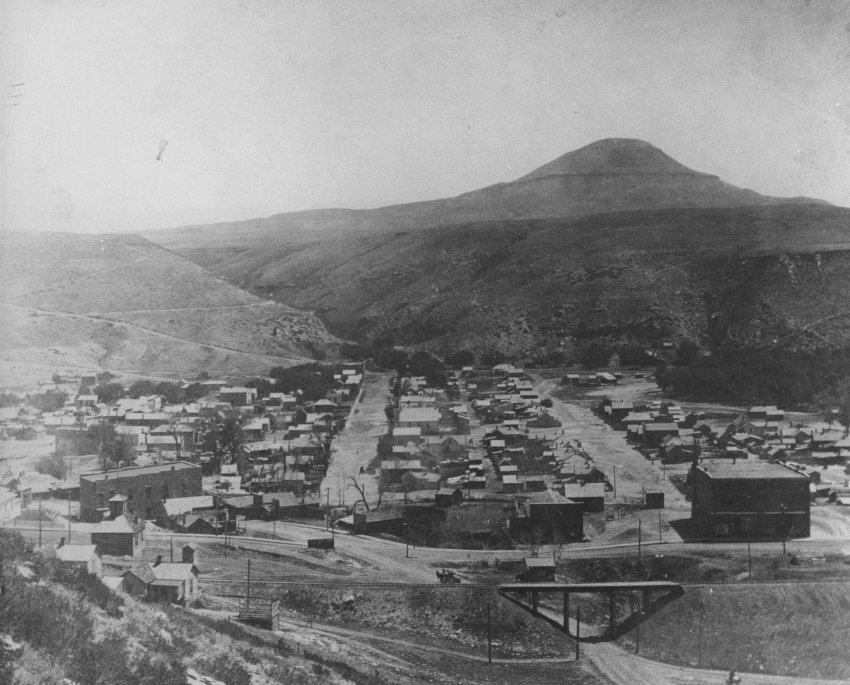Belt Valley Times Special Harvest Edition, 1915
The town of Belt resides in a small valley in Cascade County, Montana, first emerging as a coal mine which would boom into a town of about 4,000 for a short time in the late 1890s. The move from Great Falls smelters from coal to natural gas in 1930 caused the town’s economy to dwindle. The Belt Valley Times Newspaper began its life in 1891 as the Belt Mountain Miner in Barker, Montana. It moved to Armington in June 1894 for a short time before making its final move to Castner Street in Belt. The move to Armington also came with a name change, the Belt Valley Times. In 1915 they published a Special Harvest Edition to advertise the wonder of the valley, reproduced here:
Belt Valley Times Special Harvest Edition, 1915
Early History and Development of the Belt Valley by R. H. Bemis
The history of the Belt Valley before the advent of the white man is only a matter of surmise and deduction. To whom belongs the honor of giving it its name is unknown so far as we can discover. Even why the name Belt was chosen is not a certainty, although it is the generally accepted version that it is derived from an outcropping of rock which, when viewed from the west, appears to extend entirely around what is known as Belt Butte, a very prominent landmark located about two miles directly east from the city of Belt. The butte rises to a height of several hundred feet, is symmetrical in shape, with the general form of a haystack.
View of Belt, circa 1900. [1998.072.0090]
In reality, the outcropping of rock is a cliff, in places two hundred feet in height, and at a distance resembles a belt around the butte or mountain. Hence the name given probably first to the butte, then to the river at its base and also to the range of mountains lying south of the valley, and lastly, to the first settlement in the valley.
The luxuriant grass lands, free from sage brush, were no doubt favorite feeding grounds for vast herds of bison and its numerous streams afforded ideal camping places for the roaming bands of Indian hunters. Traces of both are frequently found. With the passing of the bison came the immense herds of the cattle barons, and what is probably the first habitable building erected in the Belt Valley was a log cabin built somewhere near what is known as the Peck and Lacy crossing of Lower Belt and occupied by Buck Barker, Oscar Olinger and the Kingsley brothers, Robert ad Clark. These men were employed in looking after cattle which were ranging throughout the valley. This cabin was probably built in the fall of 1876.
In the spring of 1877, John K. Castner, now a resident of Belt, discovered and staked a coal claim upon land that is now part of the city of Belt. In that same year he plowed a small patch of ground, raised a garden, one hundred rhubarb plants and several apple trees. Thus, to Mr. Castner belongs the distinction of being the first tiller of the soil in the Belt Valley. Mr. Castner was a coal miner, however, and for many years his energy was expanded in developing the coal properties acquired at that time.
Castner Hotel, Belt, Montana, circa 1910. Multiple buildings surrounded by wooden fence and road in foreground and hills in background. [1999.069.0233]
Read more about The Mother of Belt, Mattie Bell Castner, here.
Enoch Hackshaw, with his family, settled in the Belt Valley about fourteen miles north of the present town of Belt in the year 1878, and the same season raised a crop of grain, the first ever grown in the valley. It is more than probable that this crop was irrigated, as any attempts at farming without irrigation was unheard of at the period in the history of Montana.
The next year saw the arrival of several others, including the late Henry Millard, also destined to be a large factor in the development of the coal industry, in the section. George Watson, still a resident of the valley, came this year also. Mr. Watson was employed by Mr. Castner in the coal mine and at his suggestion demonstrated the coking qualities of the coal by getting a very good sample of coke by the pit method. These samples were later exhibited at the first Montana fair, held in Helena. To Mr. Millard belongs the honor of building the first coke ovens, and it was the product of these ovens that first called the attention of the officers of the Anaconda Copper Mining Co. of Butte to the value of the Belt coal fields, and resulted in the acquiring by that company of large interests in this section and a more rapid development of them.
Photograph of a coal mining operation in Belt, Montana, circa 1895. Shows a cluster of several tall buildings in front of several piles of coal leavings. [1989.138.0001]
Photograph of coal mining operation in Belt, Montana, circa 1895. Several smokestacks are in view alongside numerous buildings and piles of wood. [1989.138.0002]
Duncan A. MacLeod, or present deputy sheriff, also arrived in Belt that year. These men paved the way for the actual settlement of the region and I the early eighties the adjacent lands began to attract the farmers and stockmen to the district. Among the earliest at this period were Gust Siegling and George W. Goodman, who are still living on the lands of their choice in the upper part of the valley. These were rapidly followed by others, the first government survey of the land being made in 1884 and filings were made by many on the choice bottom lands of the different streams of the valley, and water ditches for irrigating purposes were rapidly constructed.
It appears hard to determine to whom belongs the honor of discovering that irrigation was not necessary to the successful raising of crops in the Belt Valley. There are conflicting claims in this regard, so that it is probably best to assume that the discovery was simultaneous in several parts of the valley. The agricultural possibilities of the benchlands, were artificial irrigation was impractical, if not impossible, owing to physical conditions, began to attract attention if the early nineties, and the real settlement of the farm lands of the district began at that time.
Looking North on Castner Street, Belt, Montana. [1990.003.0288]
Castner Street, Belt, Montana, circa 1900. [1994.038.0205]
The first mercantile establishment was opened at Belt by Mr. Castner who, after operating a year, sold his stock of goods to Peterson & Price, they in turn selling to Murphy, McClay & Co. of Helena. In 1884 E.R. Clingan purchased their interests and conducted the business for many years. Mr. Clingan also acquired valuable land holdings in the valley, and to the best of our knowledge was the first to introduce and advocate the rising of winter wheat, which is now the staple grain crop of the district. Mr. Clingan also urged the raising of hardier fruits, and as monument to his faith in that regard a fine, thrifty orchard of over eight hundred trees are in bearing on the Box Elder property formerly owned by him. However others were in advance of Mr. Cligan in planting fruit trees. Mr. George W. Goodman experimented in this line, and can probably claim to be the pioneer commercial orchardist. He has a very fine orchard at the present time; also Mr. Siegling and Mr. W. V. Talbott possess orchards that may be considered on the commercial basis.
Belt, Montana, circa 1900 photographed by C. L. "Buck" O'Connell. [1989.138.0003]
A bird’s eye view of Belt, Montana. Belt Mountain is seen in the distance with the town of Belt in the foreground.[1989.138.0004]
Belt Public School, Belt, Montana. About 1900. [1992.066.0467]
For the principal incidents in this brief history of the earlier days in the Belt Valley, we are indebted to Mr. Castner, who does not claim absolute accuracy as, unfortunately, he does not possess documentary records but allowing for the lapse of time and trusting to a retentive memory they should be fairly correct.









